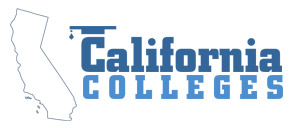|
There are nine counties that make up the San Francisco Bay Area. Almost half a million people call Sonoma County home making it the northernmost county in the bay area. Santa Rosa is the county seat. Sonoma County is also wine country. That country also includes Napa, Mendocino, and Lake Counties. Within Sonoma, there are over 250 wineries and 13 American Viticultural Areas that are approved.
While wine is popular in Sonoma County there are other agricultural products that Sonoma produces. They are poultry, hops, grapes, prunes, apples, and dairy products. These alone are enough to make Sonoma County a popular tourist attraction.
The county also is home to educational institutions. Sonoma State University and Santa Rose Junior College are both located here. Other colleges include Empire College, Golden Gate University, the University of Northern California, and the University of San Francisco.
The history of Sonoma County dates back to California became a state in 1850. The interesting part is that Sonoma County has gone through a lot of ownership changes since the year 1542. The land that would become the county was first owned by the Spanish Empire. Next, came the Kingdom of England and the Spanish Empire again until 1921 when Mexico gained independence from Spain. Years later and many hands later and finally the ownership landed at the US doorstep.
There is so much to see and do in Sonoma County. There are numerous bodies of water for fishing and boating. Endangered species and plants call the county home too. They include the California clapper tail, Salt Marsh Harvest Mouse and the Pitkin Marsh lily.
Sonoma County has a list from A-Z of unincorporated communities. Asti, Camp Meeker, Mesa Grande, Salmon Creek, Penngrove are all included. There are incorporated communities too like the cities of Cotati, Santa Rosa, and the Town of Windsor.
When visiting Sonoma County you must stop by the wineries for a sip of wine, but there are other places of interest that should be on your must see list. Bodega Bay, Lake Sonoma, the Jack London Historic Park, Stillwater Cove, and the Sonoma TrainTown Railroad. The last one is a miniature train amusement park.
While Sonoma County has various parks and mountains for outdoor recreation, that is not all that is offered. The government of Sonoma is quite tolerant of the gay and lesbian culture as the residents did vote 66.1 percent on Proposition 8 to lift the ban of gay marriage in the state of California. Because of this, the Guerneville area along the Russian River offers gay and lesbian resort options.
Higher education is an important factor of the cities in Sonoma County. Students can choose Empire College, Golden Gate University, the University of Northern California, and the University of San Francisco. California is a great place to enhance your education for your future and career.
Popular culture has been a part of Sonoma County for years. Several films have been filmed in the county and its various cities including westerns from 1915. In Sonoma County, filming was done for the 1965 movie The Third Day. The Cloverdale Airport was used in 1993 for So I Married an Axe Murderer. Sonoma Community Center on East Napa Street in Sonoma was used in 1996’s Scream. Also in Sonoma, there is an annual Sonoma Valley Film Festival.
Sonoma County can be your destination for fine wine or a place where you visit a miniature train amusement park. In addition, it can serve as a place where you and your partner can enjoy a relaxing vacation and not worry about having a gay orientation. The county really is perfect for many things and one trip is all it takes to make you a believer.
|

